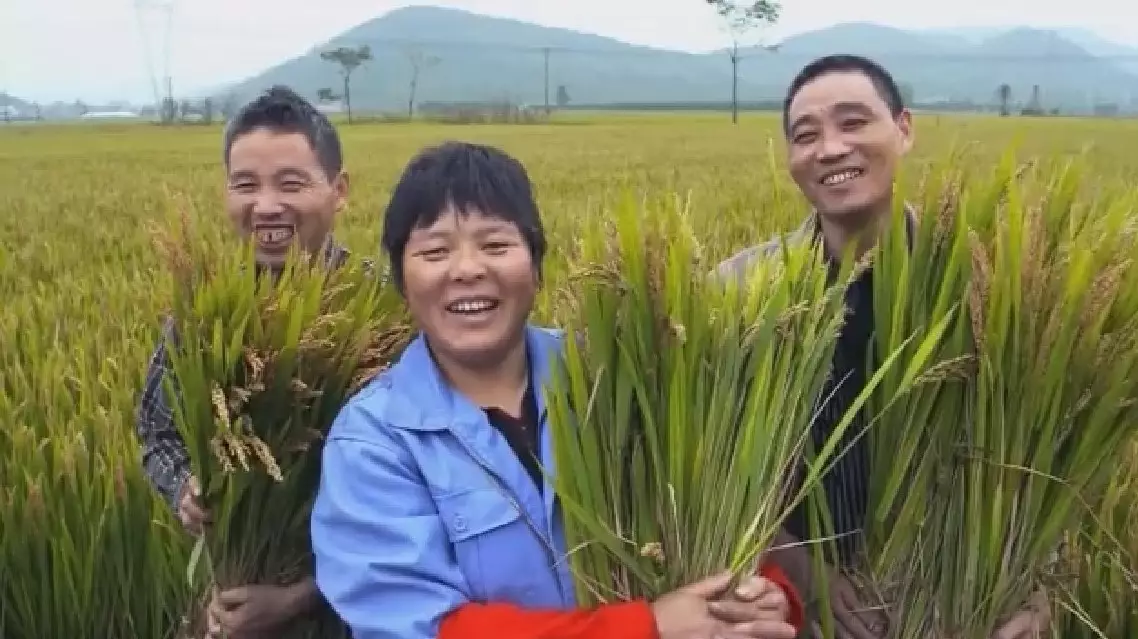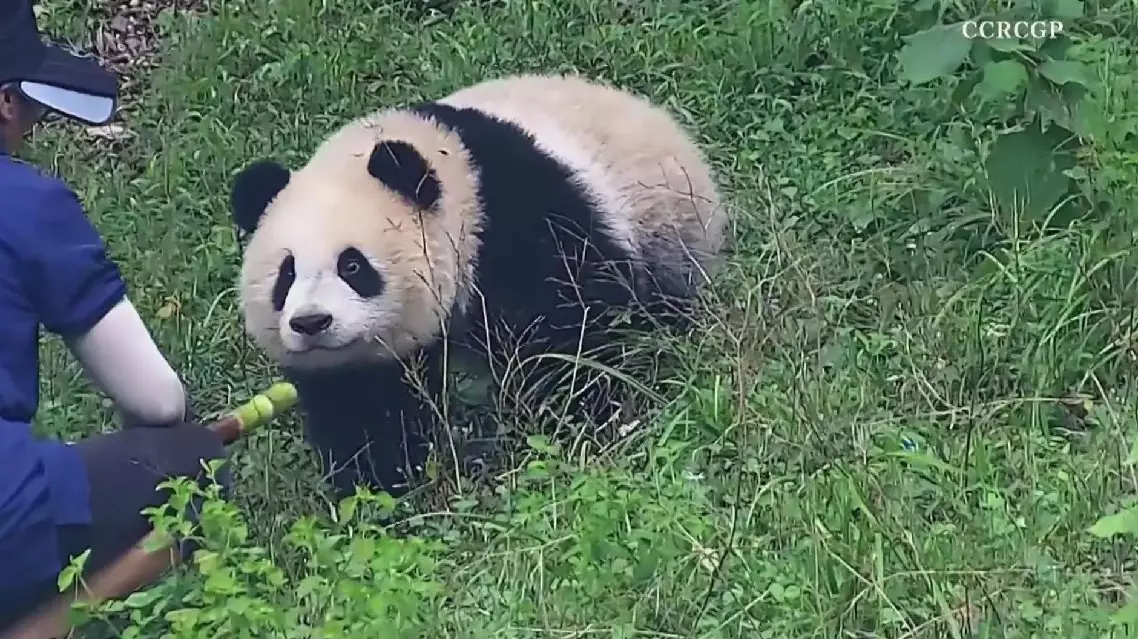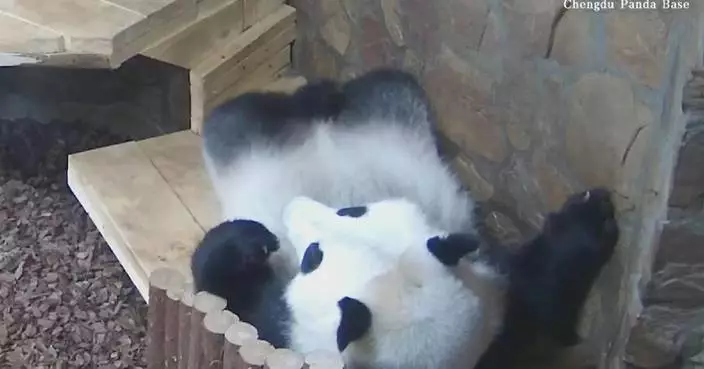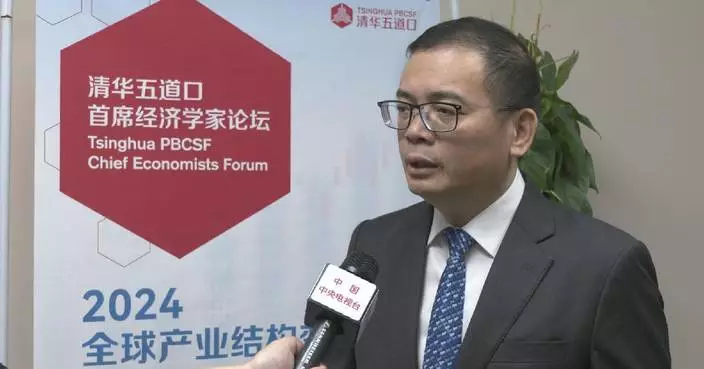China has achieved the impressive task of feeding nearly one-fifth of the world's population using just nine percent of the global arable land thanks to technological advancements and innovations like hybridization techniques that have significantly boosted grain production.
A special report by China Global Television Network (CGTN) outlined how hybridization techniques have helped improve the grain production of China over the past 75 years since the People's Republic of China was founded.
To feed a population of 1.4 billion is no easy task. After China eliminated absolute poverty in 2020, its people now have more secure food supplies. Technology and innovation are key contributors.
For nine years in a row, China's grain production has hit over 650 million tons. But decades ago, the country's ability to achieve food security was a topic of debate.
In 1995, the publication of the book "Who Will Feed China?" by environmental analyst Lester Brown triggered an explosive global response, mainly due to the scare-mongering conclusion that the development of China would drain the earth's capacity to feed its people.
Indeed, it is a difficult undertaking to feed a population as massive as China's, and the country even experienced periods of hunger in the mid-20th century.
The founding of the People's Republic of China (PRC) in 1949 brought eventual stability to food supply and the Chinese people. The population almost doubled in the first 30 years of the republic.
With such a massive population, many experts asked: Is China really a threat to the world's food security? Chinese wheat breeding and agricultural strategy expert Li Zhensheng made multiple inferences based on data and refuted the prediction made by Brown in his book.
In the 1950s, China's farmers struggled with stripe rust, a fungal disease that affects wheat. Between 1950 and 1951 alone, the disease cut the country's wheat production by 6 billion kilograms.
Agricultural scientists found it extremely difficult to tackle the problem, because the speed of the bacteria's mutation outran the speed of breeding.
Looking for a solution, Li began work to create a hybrid of wheat and forage grass, knowing the latter is very resistant to disease.
"The forage grass is so green. Diseases are rare in this plant. So I wondered if the disease resistant gene could be transferred to the wheat. That was why I started to create a hybrid of grass and wheat," said Li.
After several years of breeding experiments, Li failed to produce a successful wheat crop. The hybrids had more similarity to grass than wheat. Success came to him by chance.
In 1964, extreme climatic conditions caused over one thousand experimental plants in the field to dry up. Only one hybrid survived.
With this survivor, Li cultivated the fine wheat strain Xiaoyan 6 in 1979. It is resistant against drought, heat and disease. The Xiaoyan series greatly boosted the country's crop production over the following years.
In addition to creating hybrid wheat, China is also famous for its hybrid rice.
Yuan Longping, known as the father of hybrid rice, led the creation of a strain of hybrid rice that can yield 20 percent more than regular types.
"At that time, I had ambition to help the farmers. I witnessed their suffering. We students of agronomy are obliged to help develop agriculture, to help farmers increase production and improve their lives," said Yuan.
In 1964, Yuan Longping chose a plant in the experimental rice field with more advantages than others. He expected a higher yield after a year of careful breeding, but the attempt ended in disappointment.
"I was very disappointed. There were tall, short, and other varieties, but none were as good as the original plant,” said Yuan.
After his failure, Yuan sought to innovate his methods and challenge traditional understanding of agronomy. He believed the father plant with the biggest ear would be a natural hybrid and that its progenies would exhibit varied characteristics.
"The textbooks say that if a cross-pollinated plant is forced to self-breed, it will degenerate and therefore hybridization will be advantageous. However, there is no experimental evidence to support the logic that self-pollinating plants have no advantage in hybridization due to the absence of degeneration during self-pollination," he said.
Yuan started experiments in artificial hybridization. After a few years, the outcomes of his breeding experiments negated what the textbooks said and instead proved that rice has advantages in hybridization.
Through his research and trials, he successfully bred a long-grain non-glutinous rice. It put China in the lead in rice production worldwide.
Today, China's hybrid rice not only feeds its own population, but also keeps many others from starvation.
The work of both Li Zhensheng and Yuan Longping are examples of how technology is key to boosting agricultural production. In 2023, the contribution rate of China's agricultural technology surpassed 63 percent.

China's rapid agricultural growth fueled by history of innovation in crop hybridization










